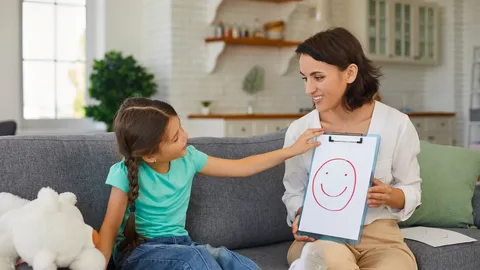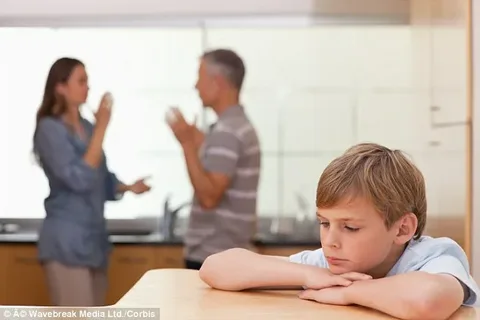Helping children and teens cope with anxiety is one of the most common reasons parents reach out to our practice at Amy Brown Counseling. Whether it’s the constant stomachaches before school, difficulty falling asleep, sudden outbursts, or simply a vague sense that something feels “off,” anxiety in kids and teens can show up in all kinds of ways. While therapy plays a vital role in helping young people manage their symptoms, there are also simple, daily habits that can create a calmer home environment and support their emotional health between sessions.
The earlier we begin to teach kids how to care for their mental health, the better. These daily habits aren’t just about managing anxiety in the moment. They’re about building a foundation of resilience and self-awareness that can serve them for years to come.
The Role of Routine in Easing Anxiety in Kids
Anxious children and teens often crave predictability, even if they don’t say it out loud. When they know what to expect, they feel safer. That’s why daily routines can make such a big difference.
A routine doesn’t need to be rigid or packed with tasks. Instead, focus on creating a rhythm that feels steady and predictable. For example, having consistent wake-up and bedtime rituals, regular mealtimes, and a defined after-school wind-down can give a child’s nervous system much-needed structure.
When things feel unpredictable in the outside world, like changes in school schedules, peer relationships, or family dynamics, having a daily routine in place helps bring a sense of control back into their lives.
Prioritizing Kids Sleep for Emotional Regulation Anxiety
Sleep and anxiety are deeply connected. Kids and teens who don’t get enough sleep are more likely to feel irritable, have trouble concentrating, and struggle to manage their emotions.
Ideally, school-age children should get 9–11 hours of sleep, while teens should aim for 8–10 hours. Easier said than done, especially with the pressures of schoolwork and screen time in the mix. One way to support better sleep is by creating a calming bedtime routine that includes screen-free time, dimmed lights, quiet activities like reading, and a consistent bedtime.
Parents can also model good sleep habits themselves. When kids see the adults in their lives prioritizing rest, they are more likely to do the same.
Nutritious Foods That Support the Nervous System
While diet isn’t the cure for anxiety, it’s an important part of a child or teen’s overall wellbeing. Blood sugar swings, dehydration, and processed foods high in sugar and caffeine can sometimes intensify anxiety symptoms.
Encouraging kids to stay hydrated, eat regular meals, and include whole foods—like fruits, vegetables, protein, and healthy fats, can help regulate their energy levels and mood throughout the day. Even small changes, like starting the day with a protein-rich breakfast or packing a lunch with balanced options, can make a noticeable difference.
Movement as a Natural Anxiety Reliever
Physical activity is one of the most effective and underused tools for managing anxiety in both kids and teens. Movement helps regulate the nervous system, release built-up tension, and boost mood through endorphins.
It doesn’t need to be structured exercise or organized sports (though those can be great too). Even ten minutes of movement, whether it’s dancing, walking the dog, playing outside, or stretching can help release nervous energy and improve focus.
For some children, especially those who experience anxiety in the form of restlessness or difficulty sitting still, movement breaks throughout the day can help them feel more grounded and calm.
Breathing and Grounding Techniques
Teaching a child or teen to pay attention to their breath is a powerful way to help them regulate their anxiety. Deep, slow breathing signals the brain that the body is safe and allows the nervous system to relax. deep breathing techniques for children.
One simple method is box breathing: breathe in for four counts, hold for four counts, breathe out for four counts, and hold again for four counts. Practicing this together even for just a minute—can help children use it when they’re feeling overwhelmed on their own.
Other grounding strategies, like naming five things they can see, four things they can touch, three things they can hear, two things they can smell, and one thing they can taste, can also help kids calm themselves when their thoughts feel too big or scary.
Limiting Screen Time for Mental Health
It’s not realistic to remove screens from kids’ lives altogether, but creating healthy boundaries around technology is important especially for those dealing with anxiety. Excessive screen time, particularly scrolling or watching fast-paced or emotionally charged content, can increase feelings of anxiety and overstimulation.
Encouraging tech-free periods during the day, especially before bed, helps reduce sensory overload and gives the brain a chance to settle. Consider replacing some screen time with calming activities, such as puzzles, journaling, or drawing.
Teaching Kids to Recognize Triggers
Anxiety doesn’t always make sense on the surface, especially to a child or teen. One minute they may seem fine, and the next they’re spiraling into distress. Helping kids identify their triggers like school transitions, social settings, or conflict at home can empower them to better understand and manage their emotional responses.
Try creating space for regular conversations about emotions without judgment. Ask open-ended questions like, “What do you think made today harder than usual?” or “Did anything feel overwhelming at school?” Even if they don’t have answers right away, these conversations plant the seeds of emotional awareness.
Encouraging Creative Expression
Children and teens often process emotions through creativity long before they can fully articulate them with words. Encouraging creative outlets such as drawing, painting, playing music, or writing—can provide a safe space to express feelings.
This is especially helpful for kids who may feel embarrassed or frustrated when trying to explain how they’re feeling out loud. Creativity becomes a tool for self-regulation and reflection, and it can even help them make sense of their inner world.
Spending Time Outdoors
Nature has a grounding effect on the nervous system. Time outside, even in small doses, can help reduce stress, boost mood, and improve concentration.
Encourage kids and teens to get outside daily if possible. Whether it’s walking around the block, biking to a park, or even sitting in the backyard, exposure to sunlight and fresh air supports mental and emotional well-being. If anxiety is peaking, being outside can also help shift their focus and provide a sensory reset.
Fostering Connection Through Relationships
Strong relationships are one of the most protective factors against anxiety. Whether it’s with parents, caregivers, teachers, coaches, or friends, kids and teens need to know they’re not alone.
Creating one-on-one time to connect with your child without distractions helps build trust and safety. This doesn’t mean heavy conversations every day. It can be as simple as playing a card game, going for a walk together, or asking what they’re looking forward to this weekend.
When kids feel seen and supported, they’re more likely to open up when anxiety starts to build.
Keeping Expectations Realistic
Children and teens who struggle with anxiety often feel immense pressure, whether it’s from school, peers, or themselves. As a parent, it can be helpful to examine where expectations may be unintentionally contributing to anxiety.
Are academic standards too high? Is there enough time in their week for rest? Are they overscheduled? Helping your child strike a balance between responsibilities and downtime can ease anxiety and improve their overall sense of well-being.
Letting your child know that mistakes are okay, that effort matters more than perfection, and that your love is unconditional helps take the pressure off.
Encouraging Help-Seeking Behavior
Sometimes, despite healthy routines and supportive parenting, anxiety remains intense or disruptive. In these cases, it’s important to let kids and teens know that asking for help is a sign of strength, not weakness.
Just like we go to the doctor when we’re sick, we can also talk to a therapist when our thoughts and feelings become too hard to manage alone. Modeling help-seeking behavior and speaking positively about therapy creates an environment where children and teens feel safe to explore that option if needed.
We’re Here to Support You and Your Child
At Amy Brown Counseling, we specialize in helping children and teens develop tools to manage anxiety and build confidence in themselves. We offer virtual therapy sessions throughout Missouri, including St. Louis and Chesterfield, for children ages 7 and up, teens, and parents. Our therapists are trained in play therapy, cognitive behavioral therapy, and other evidence-based approaches designed to meet your child where they are. Fill out our new client inquiry form today.
If you’re seeing signs of anxiety in your child or teen and aren’t sure how to help, we invite you to reach out. Together, we can create a plan that supports their mental health, and gives your whole family more peace of mind.



